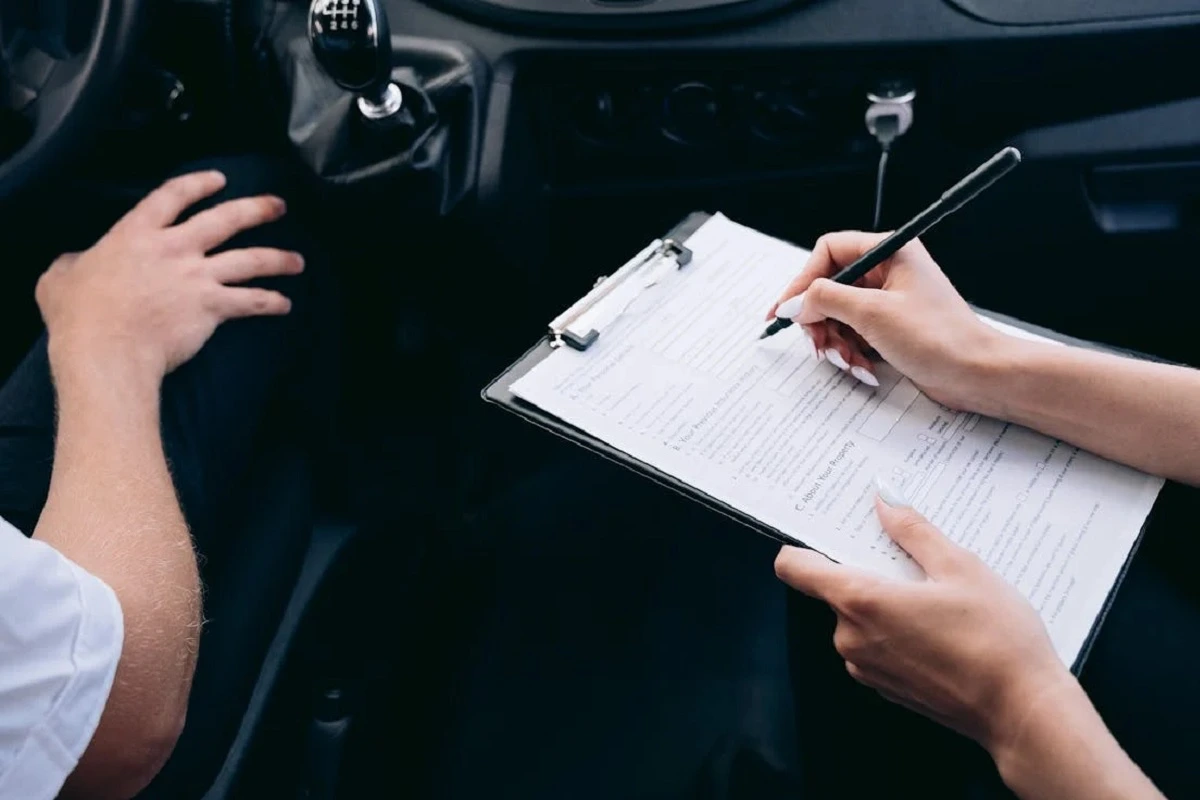How to register your vehicle online in Thailand

For vehicle owners, especially those with cars or motorcycles under five years old, this new system simplifies renewing your registration. Even if your vehicle is older, the process has been made straightforward, requiring a technical inspection before re-registration. This ensures your vehicle meets safety standards, covering checks on lights, brakes, and exhaust.
With just a few clicks, you can handle the entire registration process from the comfort of your home. Whether you’re renewing or registering for the first time, this guide will walk you through each step, making vehicle registration in Thailand hassle-free.
Understanding online vehicle registration
In Thailand, every vehicle must be registered with the Department of Land Transport (DLT), whether it’s a private car, motorcycle, or commercial vehicle. Vehicle registration is mandatory to ensure that the vehicle complies with safety standards and is legally approved for road use. In recent years, the DLT has offered an online vehicle registration service, making the process more efficient and reducing the workload at regional offices.
The online registration process can be completed through the official website or the DLT Smart Queue mobile application, depending on the type of service you need.
Here is a step-by-step guide by RDW on how to use the DLT Smart Queue mobile application. You can check this video guide to learn how to use this application with ease.
Requirements for vehicle registration

Before proceeding to register your vehicle online in Thailand, it is essential to have all the required documents and prerequisites ready to avoid delays or issues in the process. Here’s what you’ll need:
1. Required documents
- Vehicle identification card (Blue Book) or the pink copy for motorcycles.
- Proof of purchase: Sales invoice, receipt, or contract showing proof of ownership.
- Valid insurance certificate: Third-party insurance is mandatory.
- Identification: Thai ID card for citizens or passport with visa for foreigners.
- Customs clearance certificate (For imported vehicles).
- Certificate of vehicle inspection: Applicable for vehicles over 7 years old, which need a roadworthiness test
Documents required based on vehicle type
| Vehicle Type | Required Documents |
|---|---|
| New car | Proof of Purchase, Blue Book, Insurance, ID |
| Used car (transfer) | Transfer of Ownership Form, Blue Book, Insurance |
| Imported car | Customs Clearance Certificate, Proof of Purchase, Insurance |
| Motorcycle | Pink Book, Proof of Purchase, Insurance, ID |
2. Eligibility requirements
- Age: It is legally required that the vehicle owner is over 18 years old to register a vehicle in Thailand even for online and offline. This is because 18 is the legal age of adulthood in Thailand, allowing individuals to enter into binding contracts and take responsibility for ownership of a vehicle. Vehicle registration involves entering a contract with the government regarding road use and adherence to laws, which cannot be legally managed by someone underage.
- Local emission standards: Every vehicle in Thailand must meet specific emission standards set by the Department of Land Transport (DLT). These standards are in place to control pollution levels and promote cleaner air quality. Before registering a vehicle, it must be inspected to ensure that emissions are within acceptable limits. This requirement applies to both new and used vehicles, as well as imported cars. Compliance with these standards helps in reducing harmful pollutants and maintaining a sustainable environment.
- Active account on the DLT e-Service Portal: To complete the vehicle registration process online, the vehicle owner must have an active account on the DLT e-Service portal. This portal is designed to facilitate online transactions with the Department of Land Transport, allowing users in Thailand to register vehicles online, renew registrations, schedule vehicle inspections, and pay fees. The registration process for the e-Service portal requires basic information, including the owner’s identification details.
3. Fees
Fees vary depending on the type of vehicle and can include registration fees, annual tax fees, and additional charges for services. These can all be paid through the online platform. Some fee options are shown in the table below, You can check that out to get an idea:
| Fee Type | Description | Range (Thai baht) |
|---|---|---|
| Registration fee | For registering a new vehicle | 1,000 – 3,000 |
| Annual road tax | Based on engine size and type | 600 – 10,000 |
| License plate fee | For issuing new plates | 200 – 500 |
| Inspection fee | Applicable for vehicles over 7 years | 200 – 300 |
| Service charge | Administrative processing fee | 100 – 300 |
Steps to register your vehicle online

Registering your vehicle online in Thailand for 2024 is a straightforward process. Follow these steps to complete your registration efficiently and accurately.
Step 1: Create an account on the DLT e-Service portal
To begin the online vehicle registration process, you need to create an account on the DLT e-Service Portal. Start by visiting the official website at https://eservice.dlt.go.th/. Click on the “Register” button to create your account. You will need to provide personal information, including your name, identification number, address, and contact details. Once the form is completed, verify your registration by confirming either your email address or mobile number. This activation step is crucial as it enables you to use the online services provided by the DLT for vehicle registration and other transport-related needs.
Step 2: Login and navigate to registration services
After successfully creating your account, log in to the DLT e-Service portal. Navigate to the “Online Vehicle Registration” section, which is the hub for all registration-related tasks. Here, you will be prompted to choose between “Register a New Vehicle” if this is your first time registering a vehicle, or “Renew Vehicle Registration” if you are simply renewing an existing registration. Selecting the correct option will ensure you are guided through the appropriate steps based on your needs.
Step 3: Provide vehicle details
In this step, you will need to enter the specific details of your vehicle. Start by providing the Vehicle Identification Number (VIN), which uniquely identifies your vehicle. You will also need to provide additional details, such as the make, model, year of manufacture, colour, and engine capacity. All the details must be filled in accurately, as discrepancies could delay the registration approval process.
Step 4: Upload the required documents
After entering your vehicle details, you will need to upload the required documents. These documents include a Vehicle Identification Card, Proof of Purchase (like the sales invoice or contract), and a Valid Insurance Certificate (third-party insurance is mandatory). If your vehicle is imported, you will also need a Customs Clearance Certificate. Make sure the scanned copies are clear and properly formatted to avoid delays or rejections during the verification process.
Step 5: Pay the fees
The next step involves paying the registration fees. Once you select “Pay Fees”, you will be provided with multiple payment options, including credit/debit cards, bank transfers, and mobile banking. Major providers such as Visa, MasterCard, JCB, and local banks like SCB, Kasikorn Bank, and Krungthai are supported for payment. You can also use all major Thai banks for bank transfers. After completing the payment, a payment receipt will be sent to your email, which is essential for your records.
Step 6: Scheduling an inspection
For vehicles that are older than 7 years, a vehicle inspection is mandatory before the registration can be completed. You can schedule this inspection through the DLT Smart Queue app or directly from the DLT e-Service portal. You will be required to select a convenient date and visit a nearby DLT-approved inspection centre. This inspection ensures that the vehicle is roadworthy and complies with local regulations regarding safety and emissions.
Step 7: Wait for verification
Once all the documents are uploaded and the payment is made, the Department of Land Transport (DLT) will proceed with verifying the information. This verification process generally takes between 1 to 3 business days, during which your details will be checked for accuracy and completeness. You can track the status of your application by logging in to the DLT e-Service portal to see if there are any updates or additional requirements.
Step 8: Receive registration confirmation
Upon successful verification, you will receive a registration confirmation. A digital copy of the vehicle registration certificate will be made available on the portal for download. Additionally, the Vehicle Identification Card (Blue Book), which is essential for proof of vehicle ownership, will be mailed to your registered address. Delivery typically takes 7 to 10 business days, and it is important to ensure your address is up to date to avoid delays.
Step 9: Receive license plates
After the registration is approved, the license plates will be issued. You can either collect these plates from the nearest DLT office or choose to have them shipped to your registered address. It is advisable to double-check the information to ensure that everything is accurate. Properly displayed license plates are a legal requirement in Thailand, so make sure they are installed on your vehicle as soon as they are received.
Common errors during vehicle registration
- Incorrect Document Uploads: Ensure that the documents are clear and legible, and upload them in the required format (JPEG or PDF).
- Incomplete Payment: Payment must be completed within the given timeframe to proceed with registration.
- Incorrect Vehicle Details: Double-check the VIN, engine number, and other details to ensure accuracy.
Benefits of online registration

The convenience of reserving your registration number and verifying your identity online streamlines the entire experience on top of being able to purchase cars as well if you want. Remember to double-check your entries to avoid any hiccups. With these tools at your disposal, you can enjoy a seamless registration process that saves you time and effort. Take note of these steps and make your online vehicle registration in Thailand a hassle-free task in 2024 and beyond.
Frequently asked questions
Yes, foreigners can register their vehicles online in Thailand. They need a passport, proof of address, and a valid visa or work permit. For vehicles older than 7 years, a vehicle inspection is mandatory. You can schedule this through the DLT Smart Queue app or the e-Service portal, then visit a DLT-approved inspection center. After submitting your documents, the DLT takes 1 to 3 business days to verify your information. Once approved, you will receive a digital copy of the registration and the Blue Book by mail. After approval, you can collect your license plates from a DLT office or choose to have them delivered to your registered address. Ensure that all documents are properly scanned and in the required format. If problems persist, check for errors in your input details, such as the Vehicle Identification Number (VIN) or contact the DLT support team. Yes, you can track the status of your application by logging into the DLT e-Service portal. The status is updated in real-time as your application moves through each verification step. Once registered, you can access roadside assistance provided by your vehicle manufacturer or through private services, ensuring help during emergencies, including issues related to a drained battery or towing.Can foreigners register their vehicles online in Thailand?
What should I do if my vehicle is older than 7 years?
How long does the online registration process take?
How can I receive my license plates after online registration?
What should I do if I encounter errors during the registration process?
Can I track my application status?
Is roadside assistance available for registered vehicles?
Latest Thailand News
Follow The Thaiger on Google News:


























